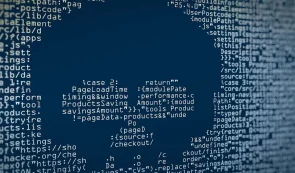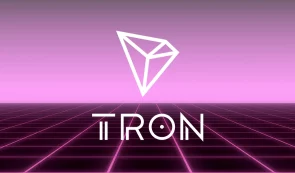Smart Contracts Explained

Smart contracts are self-executing contracts with the terms of the agreement between buyer and seller represented by lines of code. The code and agreements exist across a distributed, decentralized blockchain network.
This new form of automated agreements is created using a programming language, such as Solidity or Viper, that is specifically designed for writing smart contracts. The contract creator writes the code for a smart contract, specifying the terms of the agreement and the conditions that must be met for the contract to be executed.
Once the contract is created, it is deployed to the blockchain network, where it is stored and managed by the network. The contract exists on the network as a digital record, and it can be accessed and verified by any user on the network.
When the conditions specified in the contract are met, the contract will automatically execute and enforce the agreed-upon terms without the need for third-party intermediaries. This can provide many benefits, including increased efficiency, transparency, and security.
Smart contracts can be used in a variety of industries and applications. They offer the potential to streamline and automate a wide range of processes. They are seen as a critical technology in developing decentralized applications (dApps) and the broader blockchain ecosystems.
Origin of smart contracts
The concept of smart contracts was first proposed by Nick Szabo, a computer scientist and legal scholar, in the 1990s. Szabo recognized the potential for using computer code to automate the enforcement of contracts, and he coined the term “smart contracts” to describe this concept.
Szabo’s idea was to use the capabilities of computer networks to create digital contracts that could be executed automatically without needing third-party intermediaries. He saw the potential for these tools to streamline and automate a wide range of business and legal processes. He argued that they could provide many benefits, including increased efficiency, transparency, and security.
Szabo’s ideas were further developed and refined by the creators of the Ethereum network, who saw the potential in using blockchain technology to enable the creation and execution of smart contracts. The Ethereum network, which was launched in 2015, was explicitly designed to support the creation and execution of smart contracts, and it has become the most well-known platform for this purpose.
The idea put forth by the creator of the concept of smart contracts was influential in the development of the Ethereum network, and Szabo’s work heavily influenced its creators. However, he was not directly involved in creating the Ethereum network, and he did not have any direct role in its development.
How are smart contracts executed?
- The contract creator writes the code for the smart contract using a programming language that is specifically designed for writing smart contracts (such as Solidity or Viper). The code specifies the terms of the agreement and the conditions that must be met for the contract to be executed.
- The contract code is deployed to the blockchain network, where it is stored and managed by the network. It exists on the network as a digital record, and it can be accessed and verified by any user on the network.
- The parties involved interact with the network and provide the necessary inputs to trigger the execution of the contract. For example, the parties may provide the necessary funds or assets if we’re discussing a financial contract.
- The network verifies that the conditions specified in the contract have been met, and if they have, the contract is executed automatically. This may involve the transfer of funds or assets, the execution of a specific function or algorithm, or the triggering of other events or actions.
- The execution of the contract is recorded on the blockchain, and the results are available to all users on the network. This provides a transparent and auditable record.
The execution of a smart contract involves the creation and deployment of the contract code, the provision of necessary inputs by the parties involved, the automatic execution of the contract by the network, and the recording of the results on the blockchain. This process can provide several benefits, including increased efficiency, transparency, and security.
What networks can execute smart contracts?
Smart contracts can be executed on any blockchain network that supports the necessary features and capabilities.
The most well-known network for executing smart contracts is the Ethereum network, which was specifically designed to support the creation and execution of smart contracts.
Besides Ethereum, other blockchain networks support the execution of smart contracts, including EOS, Tron, and Neo. These networks offer similar features and capabilities to Ethereum, allowing for the creation and execution of smart contracts using their respective programming languages and tools.
In addition to the networks mentioned above, some other blockchain networks support the execution of smart contracts:
- Cardano is a blockchain platform that is designed to support the execution of smart contracts and decentralized applications. It uses the Haskell programming language for writing smart contracts and offers several features and tools to support their development and deployment.
- NEM is focused on enabling enterprise-level applications, including the execution of smart contracts. The NEM network uses the Java programming language for this purpose.
- Tezos also supports the use of smart contracts. Its’ network uses the Michelson programming language.
It’s important to note that not all blockchain networks support the execution of smart contracts. Bitcoin and Litecoin are good examples, focusing primarily on enabling peer-to-peer transactions.
Use cases of smart contracts
- One of the most common use cases for smart contracts is in financial transactions. They can be used to automate and enforce the terms of financial agreements, such as loans, insurance policies, and other financial contracts. For example, a smart contract could be used to automatically disburse funds to a borrower based on predefined terms and conditions, such as the receipt of collateral or the repayment of previous installments.
- Another common use case is in supply chain management. Smart contracts can automate and enforce the terms of agreements between suppliers, manufacturers, and customers, and they can provide a transparent and auditable record of the movement of goods and materials through the supply chain. A smart contract could be used to automatically release payment to a supplier based on the successful delivery of goods to a customer.
- Smart contracts can also be used in the real estate industry to automate and enforce the terms of real estate contracts. For example, a smart contract could be used to automatically transfer ownership of a property from the seller to the buyer based on the receipt of payment and the satisfaction of other contractual conditions. Smart contracts provide a transparent and secure way to manage real estate transactions and help streamline the process and reduce the need for third-party intermediaries.
- Another use is enabling secure and transparent voting systems. For example, a smart contract could be used to manage the voting process for a corporate shareholder meeting or a political election. The contract could automatically record and count votes, ensuring that the results are tamper-proof and verifiable. This could provide a more secure and transparent way to conduct elections and other voting processes.
- These agreements can also be used to manage and verify digital identities. For example, a smart contract could be utilized to store and manage the digital credentials and documents that are used to prove a person’s identity, such as a driver’s license or a passport. This way, there can be automatic verification of the authenticity of these credentials and documents, providing a secure and transparent way to manage digital identities.
Difficulties with smart contracts
Human error can create many problems in the use of smart contracts. One of the main issues is that errors or mistakes in the code of a smart contract can result in unintended consequences or flawed execution.
For example, if a contract is incorrectly coded, it could result in the wrong parties receiving funds or assets or lead to improper execution.
Another problem is that human error can result in security vulnerabilities. For example, if a contract is not adequately secured, it could be vulnerable to attacks or malicious tampering. This could lead to the loss of funds or assets.
Many problems can arise from the improper creation of a smart contract. It’s important for creators to carefully review and test their code to ensure that they are correctly structured and secure in order to avoid these potential pitfalls.







